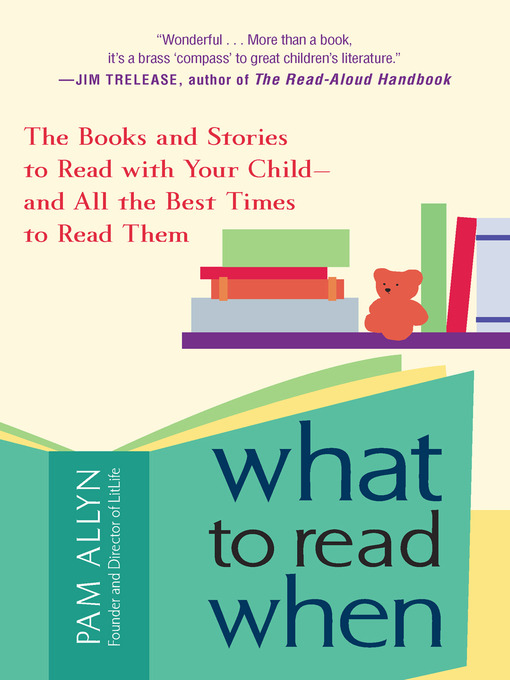The books to read aloud to children at the important moments in their lives.
In What to Read When, award-winning educator Pam Allyn celebrates the power of reading aloud with children. In many ways, books provide the first opportunity for children to begin to reflectively engage with and understand the world around them. Not only can parents entertain their child and convey the beauty of language through books, they can also share their values and create lasting connections.
Here, Allyn offers parents and caregivers essential advice on choosing appropriate titles for their children—taking into account a child’s age, attention ability, gender, and interests— along with techniques for reading aloud effectively. But what sets this book apart is the extraordinary, annotated list of more than three hundred titles suitable for the pivotal moments in a child’s life. With category themes ranging from friendship and journeys to thankfulness, separations, silliness, and spirituality, What to Read When is a one-of-a-kind guide to how parents can best inspire children through reading together. In addition, Pam Allyn includes an indispensable “Reader’s Ladder” section, with recommendations for children at every stage from birth to age ten. With the author’s warm and engaging voice throughout, discussion questions to encourage in-depth conversations, as well as advice on helping kids make the transition to independent reading, this book will help shape thoughtful, creative, and curious children, imparting a love of reading that will last a lifetime.
These Penguin Young Reader's Books are referenced in What to Read When



